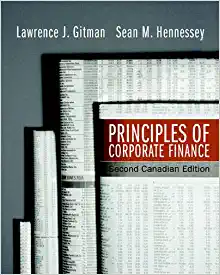Question
Question 1 When a firm borrows money and uses the borrowed funds to repurchase some of its outstanding stock, the transaction is called a: leveraged
Question 1 When a firm borrows money and uses the borrowed funds to repurchase some of its outstanding stock, the transaction is called a: leveraged buyout. unlevered recapitalization. stock repurchase. leveraged recapitalization. 4 points Question 2 The legal proceeding in which the existing management of a firm is given an opportunity to reorganize the financial affairs of the firm while attempts to collect money owed by the firm are temporarily suspended is: Chapter 7 liquidation. Chapter 11 reorganization. recapitalization. receivership. Question 3 __________ is the phenomenon that occurs when a corporation issues new shares of stock while the firm's earnings remain the same, so that earnings per share decrease. Leverage Recapitalization Dilution Conservation of value Question 4 In a tax-optimal capital structure, the level of interest payments that is proper is determined by the: cash flow of the firm. unlevered cost of capital. firm's need for cash. level of the firm's EBIT. Question 5 When a firm raises funds from outside sources, its choices are usually to raise those funds through: equity alone or debt alone. equity alone or through a combination of debt and equity. selling stock or borrowing money. equity or retained earnings. Question 6 When a firm faces financial distress and chooses not to invest in new projects with positive NPV, there is __________ problem. a debt-overhang an agency a cash flow a leverage Question 7 Although bankruptcy should be a last resort for a firm experiencing financial trouble, bankruptcy can provide renewed access to financing through: issuance of new equity. repurchase of outstanding stock. debtor-in-possession financing. workouts. 4 points Question 8 When a firm has difficulty in meeting its debt obligations, the firm is considered to be: insolvent. in financial distress. bankrupt. over-leveraged. Question 9 Firms with __________ can use high levels of leverage and still have a low probability of default. positive cash flow an unlimited line of credit stable, reliable cash flow no debt Question 10 The total market value of a firm's securities is equal to the market value of all of its assets, whether the firm is unlevered or levered. Whether or not this statement is true, it is a reflection of: Modigliani and Miller's first proposition. capital structure theory. weighted average cost of capital. leverage. Question 11 Aside from taxes, another important difference between debt and equity financing is that debt payments must be made to avoid default, while firms have no similar obligation to pay dividends. How do debt and equity financing affect a firm?s tax situation differently? Why do debt payments have to be made but dividends do not have to be paid? Question 12 What is an interest tax shield? What does it mean to the financial success of a firm?
Step by Step Solution
There are 3 Steps involved in it
Step: 1

Get Instant Access to Expert-Tailored Solutions
See step-by-step solutions with expert insights and AI powered tools for academic success
Step: 2

Step: 3

Ace Your Homework with AI
Get the answers you need in no time with our AI-driven, step-by-step assistance
Get Started


